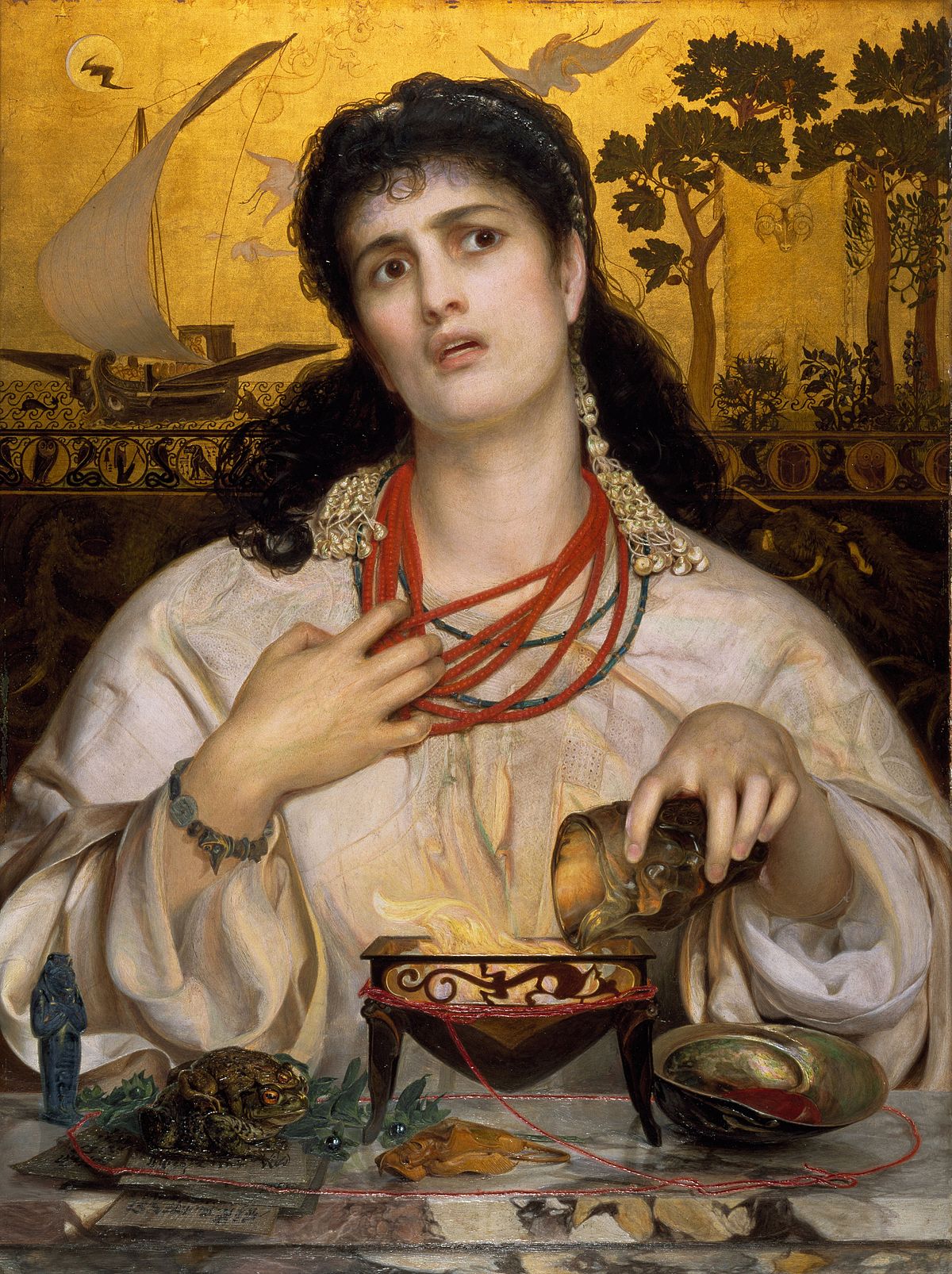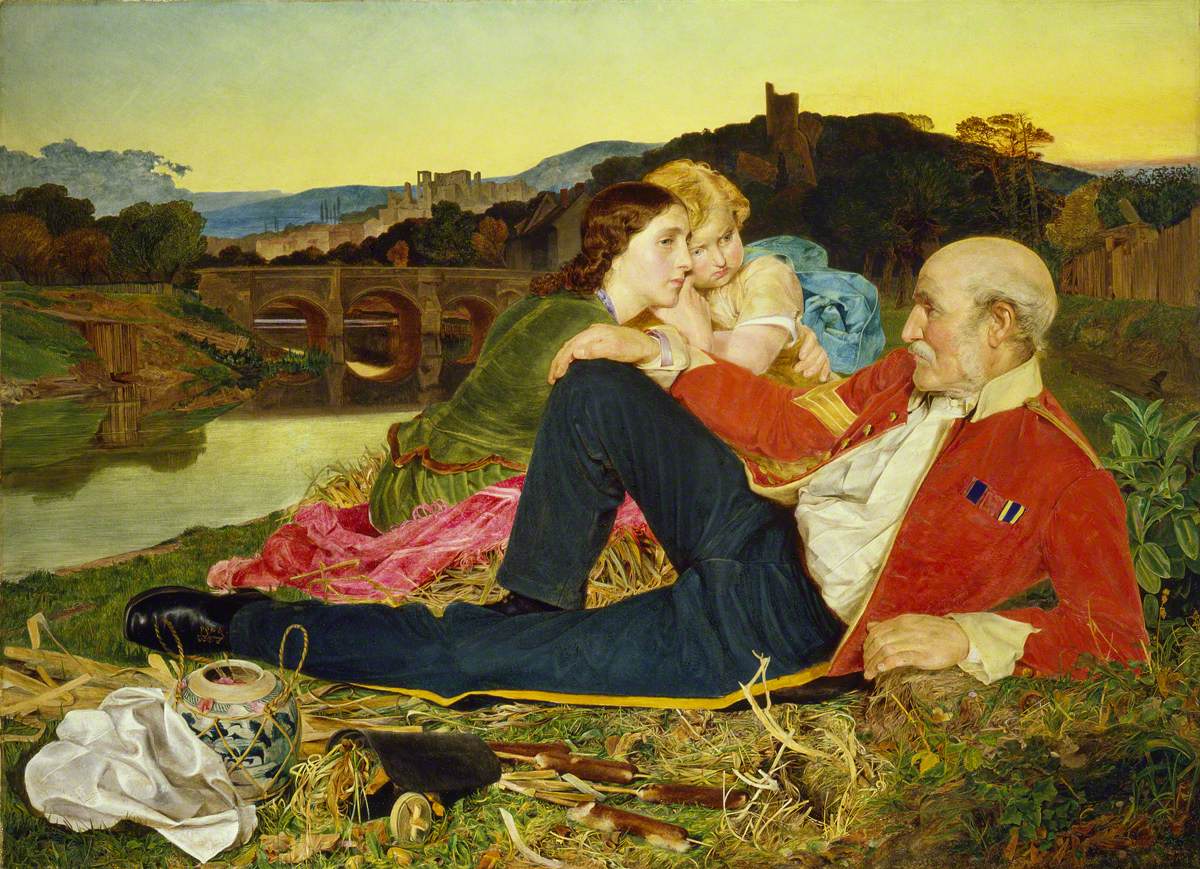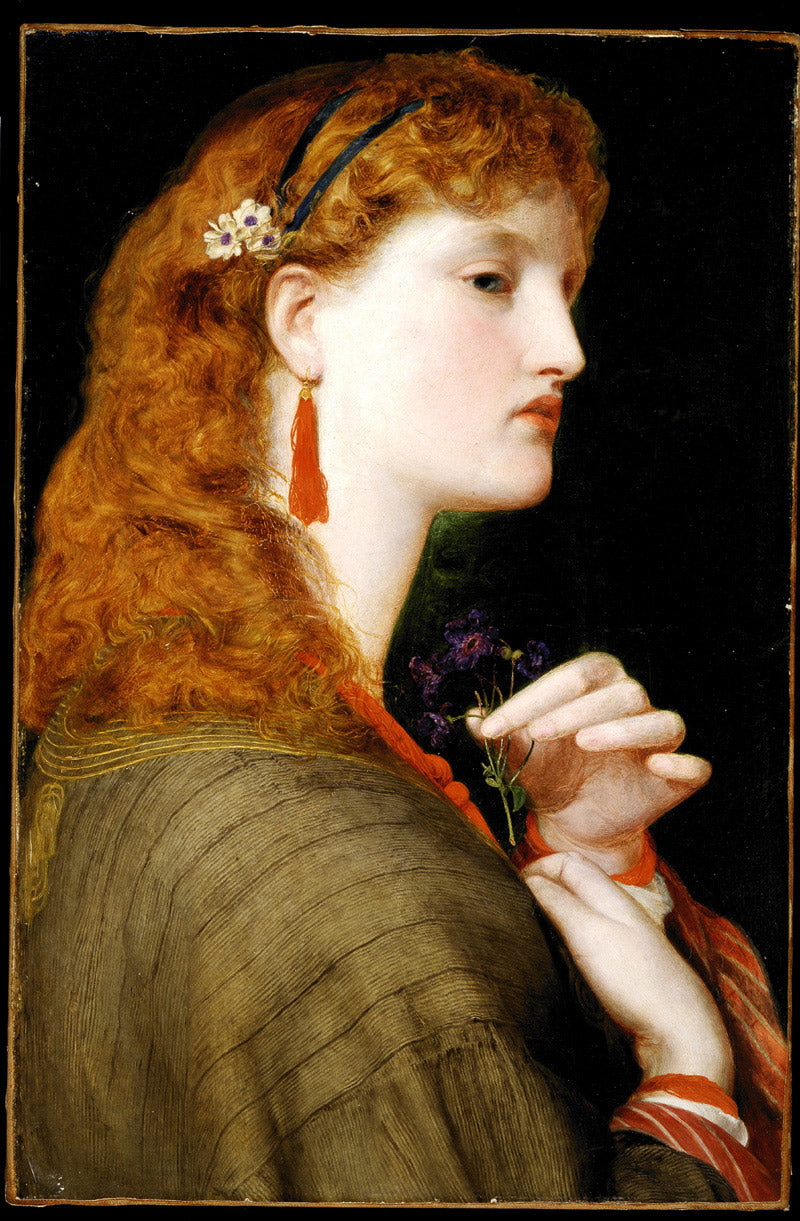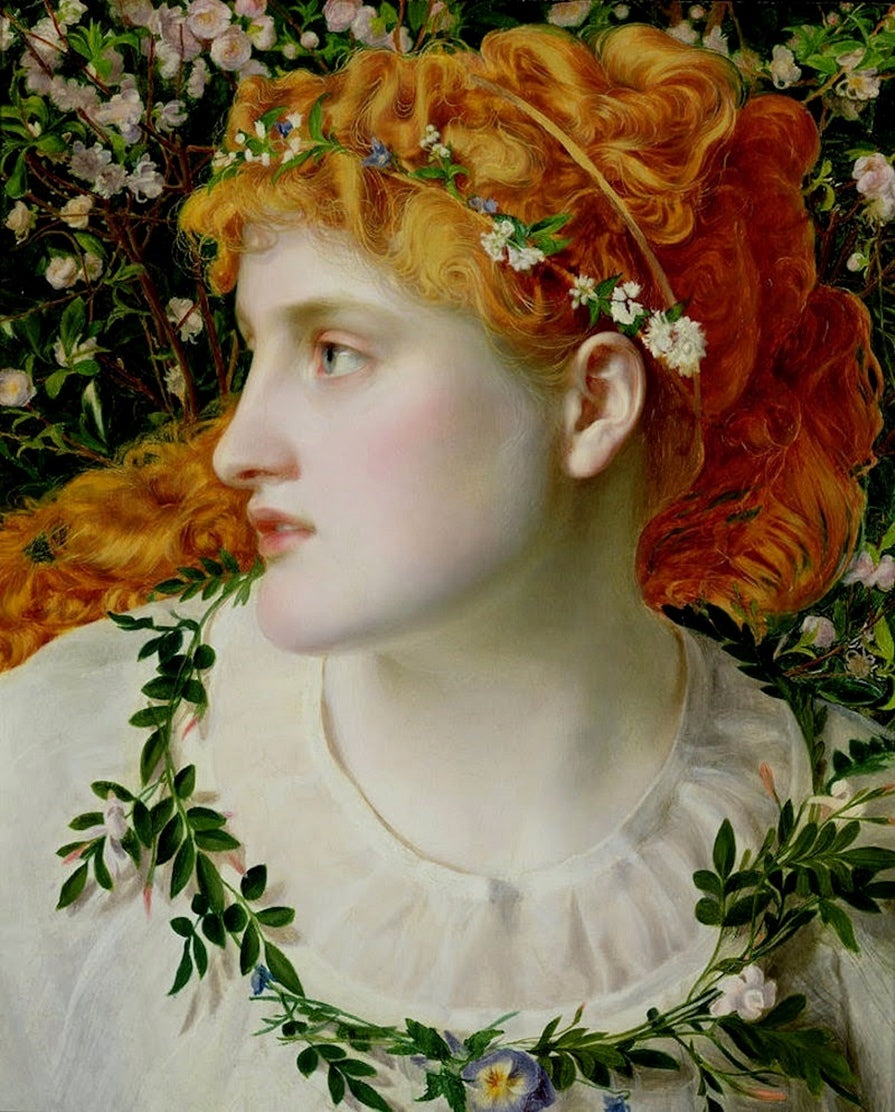
Frederick Sandys, one of the pre-eminent artists of the Pre-Raphaelite movement, left an indelible mark on the history of 19th-century Victorian art. Born Anthony Frederick Augustus Sands in Norwich, his artistic career unfolded like an intricate narrative, interweaving unparalleled technical skill and the emotional expressiveness characteristic of movement. This article explores the life and work of Frederick Sandys, from his early days as a prodigious draftsman to his consecration as a renowned painter. By approaching iconic works such as "Morgan le Fay" and "Love's Shadow," we delve into the deep layers of symbolism, mythology, and emotional intensity that defined Frederick Sandys' artistic corpus. His singular contribution to the Pre-Raphaelite panorama and his ability to transcend the limits of artistic representation make Frederick Sandys a captivating figure worthy of in-depth analysis.

What was Frederick Sandys' journey?
Frederick Sandys was a British artist from the Pre-Raphaelite group, known especially for his skill as a draftsman. Born on May 1, 1829, he began his artistic education under the guidance of his father, Anthony Sands, who was a painter, master of drawing and portrait painter of diverse subjects. Frederick Sandys' formal education included Norwich Grammar School and the Government School of Design in Norwich. His talent as a draftsman manifested itself early, and he began exhibiting drawings at the Norwich Art Union from 1839 onwards. In 1846 and 1847, he received medals from the Royal Society of Arts, marking his early recognition. In 1851, the same year he first exhibited at the Royal Academy, Sandys moved to London. During this period, he married Georgina Creed, daughter of a Norwich artist, and changed the spelling of his surname from Sands to Sandys around 1855.
In the 1850s and early 1860s, Frederick Sandys worked primarily as an illustrator and portraitist, but also began painting in oils. His work "Oriana" (1861) is an example of this phase of his career. In 1857, Frederick Sandys had his first contact with the Pre-Raphaelites when working on the engraving "A Nightmare", a parody of Millais's work, "Sir Isumbras at the Ford". This meeting brought him closer to Dante Gabriel Rossetti, and they became friends, although Sandys remained on the outskirts of the group.
Frederick Sandys exhibited regularly at the Royal Academy from 1851 to 1886, and at the Grosvenor Gallery, London, from 1877. He was also a founding member of the International Society of Sculptors, Painters and Gravers in 1898. Throughout his life, he faced financial difficulties, declaring bankruptcy in 1873 and again in 1884 and 1899.
His work was characterized by superiority in drawing, and his works were influenced by the Pre-Raphaelite style, focusing on portraits and illustrations of outdoor scenes and themes from Norse mythology. Frederick Sandys was also known for portraits of writers commissioned by Alexander Macmillan in 1880.
Frederick Sandys' personal life was marked by his relationship with actress Mary Jones, with whom he had nine children. He died in London on June 25, 1904. His sister, Emma Sandys, was also an artist of some repute.
Frederick Sandys' artistic legacy is notable for his mastery of drawing, his style influenced by the Pre-Raphaelites, and his powerful and sensual depictions of female beauty and mythical figures. His works continue to be appreciated and studied as a significant part of the 19th century artistic movement.

What are the characteristics of Frederick Sandys' works?
Drawing Skill: Frederick Sandys was widely praised for his exceptional drawing skills. He was described by Dante Gabriel Rossetti as "the greatest living draftsman", and this skill is evident in all his works. His lines were precise, detailed and demonstrated remarkable technical dexterity.
Pre-Raphaelite Style: Frederick Sandys was associated with the Pre-Raphaelite movement, a group of artists who sought a more detailed and naturalistic approach as opposed to the conventional styles of the time. As such, his works often display meticulous attention to detail, vibrant colors and an inspiration from medieval art.
Portraits and Female Figures: Frederick Sandys became known for his portraits and representations of female figures, often highlighting the beauty, sensuality and mysticism of women. His women were often portrayed as mythological or literary figures, giving his works a timeless and symbolic quality.
Mythological and Literary Themes: Frederick Sandys' work often explored mythological and literary themes. He portrayed characters from Arthurian legends, figures from Greek and Roman mythology, as well as literary characters. These themes were common among the Pre-Raphaelites, who sought a deeper connection with literature and history.
Dramatism and Emotional Intensity: His paintings were characterized by a strong sense of drama and emotional intensity. He was able to capture crucial moments and striking facial expressions, conveying strong emotions in his works.
Use of Symbolism: Like other Pre-Raphaelites, Frederick Sandys incorporated symbolism into his paintings. Symbolic elements, such as flowers, colors and objects, were often used to convey deeper meanings and enrich the context of the works.
Textile Details and Adornments: Frederick Sandys' attention to detail extended to his characters' costumes and props. He painted fabrics with great detail, capturing the texture and pattern of clothes, and often adorned his characters with elaborate jewelry and accessories.
Rossetti's influence: His friendship with Dante Gabriel Rossetti had a significant influence on his work, especially in its early stages. The relationship with Rossetti introduced Sandys to the Pre-Raphaelites and contributed to his unique artistic style.

What are Frederick Sandys' most famous works?
"Morgan le Fay" (1862-63): This painting depicts Morgan le Fay, a figure from Arthurian legend, known as a sorceress and half-sister of King Arthur. The work highlights Frederick Sandys' Pre-Raphaelite style, with meticulous detail and a vivid depiction of the character.
"Medea" (1868): Inspired by Greek mythology, "Medea" is another notable work by Frederick Sandys. The painting depicts Medea, the sorceress who helped Jason win the Golden Fleece. The image captures the character’s emotional intensity.
"Cassandra" (1898): A dramatic representation of the mythological figure Cassandra, this work highlights Frederick Sandys' ability to express intense emotions. The painting shows Cassandra at the moment her consciousness is ripped from her, reflecting the tragedy of her predictions.
"Love's Shadow" (1867): This painting is an intriguing depiction of a bejeweled woman captured in a moment of transgression. The work highlights Sandys' mastery of expressing complex emotions and symbolism, with details such as the flowers the model is biting into.
"Oriana" (1861): One of Frederick Sandys's first forays into oil painting, "Oriana" is a depiction of a female figure from Arthurian legend. The work reveals the influence of the Pre-Raphaelite style, with meticulous attention to detail and a romantic atmosphere.
"Proud Maisie" (portrait series): Frederick Sandys created a series of portraits based on his work "Love's Shadow", known as "Proud Maisie". These portraits explore different variations of the same theme, showing a woman biting her own hair, often alluding to the Ouroboros symbol.

In closing this careful look at the life and work of Frederick Sandys, it is clear that his contribution transcends the mere historical record. Amid the flowering of the Pre-Raphaelite movement, Frederick Sandys emerged as a master of the art of drawing, deftly intertwining technical precision with undeniable passion. His paintings, such as "Morgan le Fay" and "Love's Shadow," continue to captivate viewers, each detail telling a story, each brushstroke echoing the emotions that Frederick Sandys immortalized.
The emotional intensity that permeates his feminine and mythological representations not only reflects Pre-Raphaelite aesthetics, but also reveals Frederick Sandys' deep understanding of the complexity of the human condition. By exploring symbolism, Frederick Sandys enriched his works with layers of meaning, inviting the viewer on a journey beyond the surface.
Frederick Sandys' influence reached beyond temporal boundaries, and his technical skill was compared to Renaissance masters. However, he remains a singular figure, an artist who fused the classical with the romantic, the mythological with the human. His legacy echoes through the decades, influencing successive generations of artists and admirers. In a world of social and artistic transitions, Frederick Sandys stands out like a beacon, illuminating the intersection between exquisite technical skill and emotional depth. His art continues to inspire, provoke reflection and connect the viewer to a time when the vibrant palette of the Pre-Raphaelites brought timeless visions to life. As guardian of this legacy, Frederick Sandys remains immortalized in his works, inviting us to explore the eternal nuances of the human condition through his singular artistic vision.
